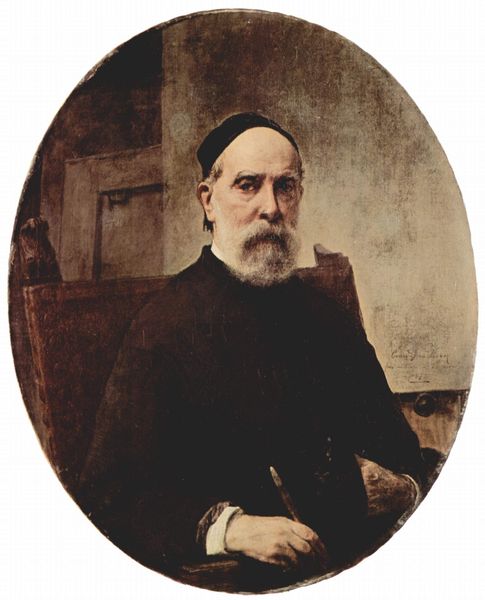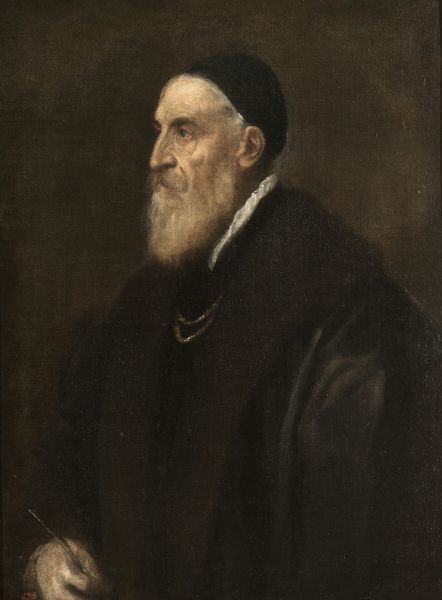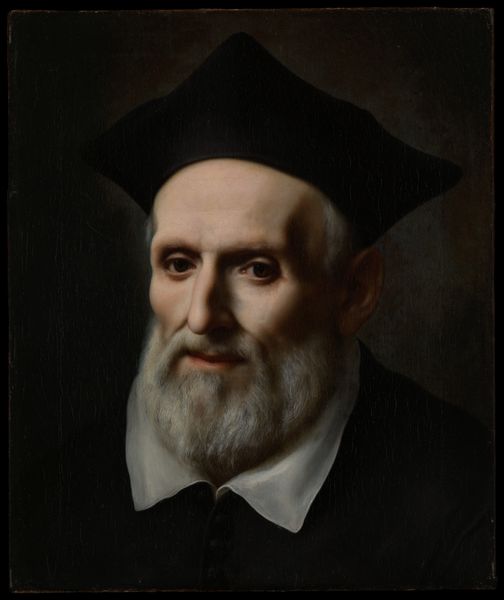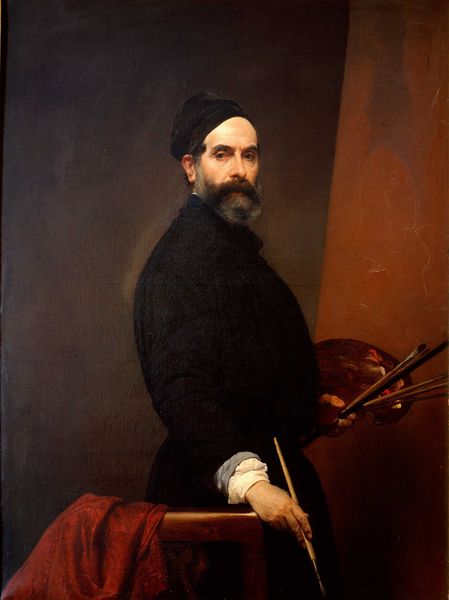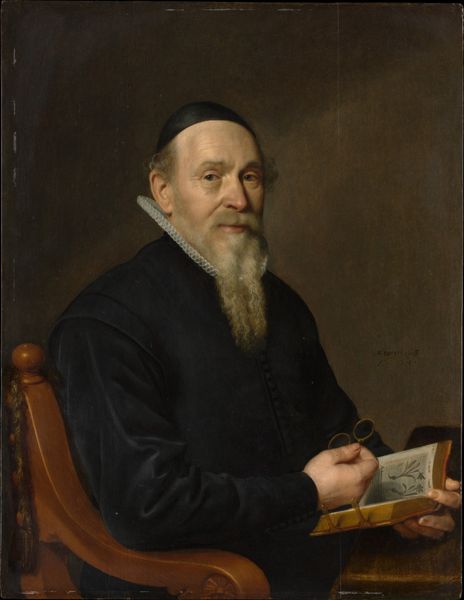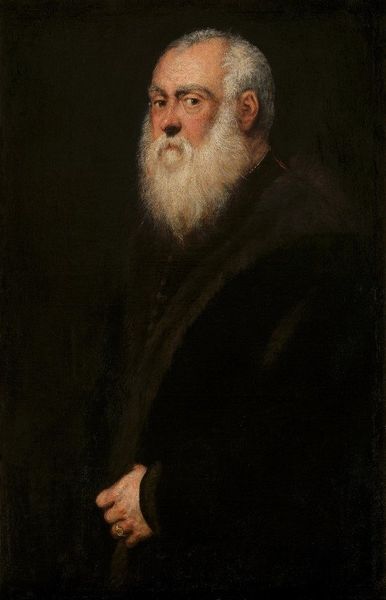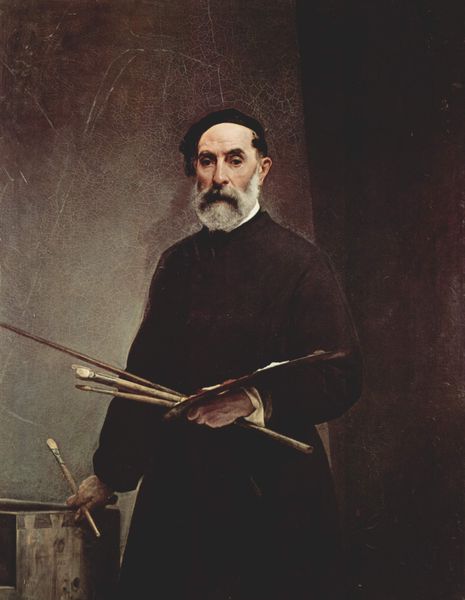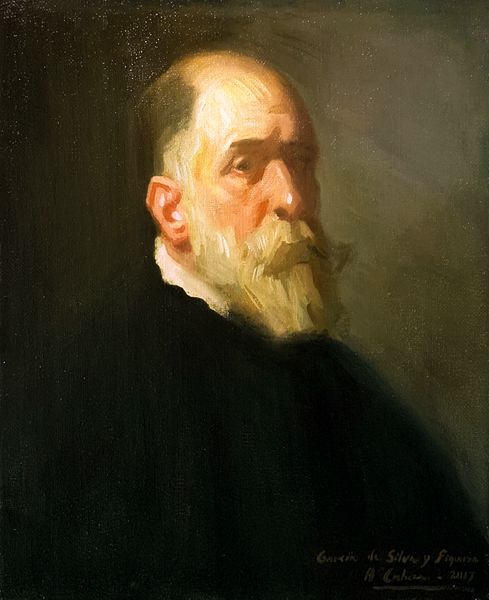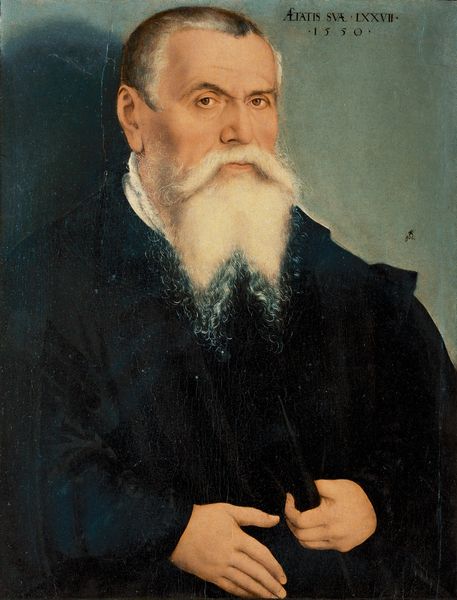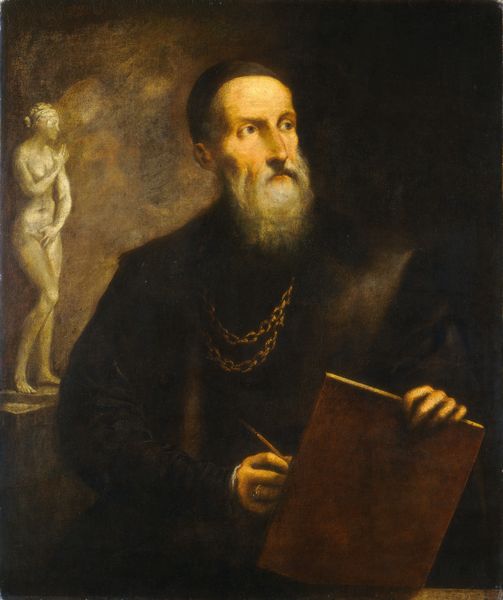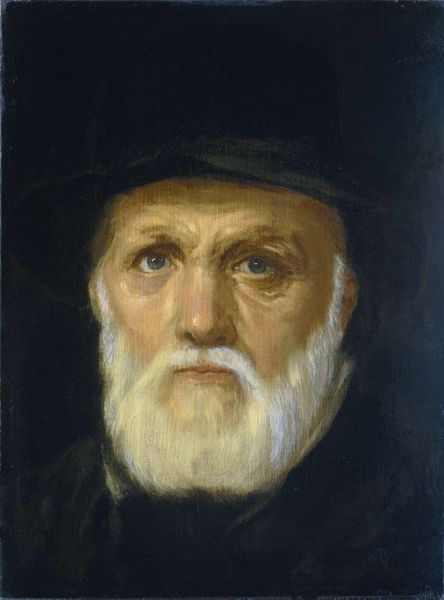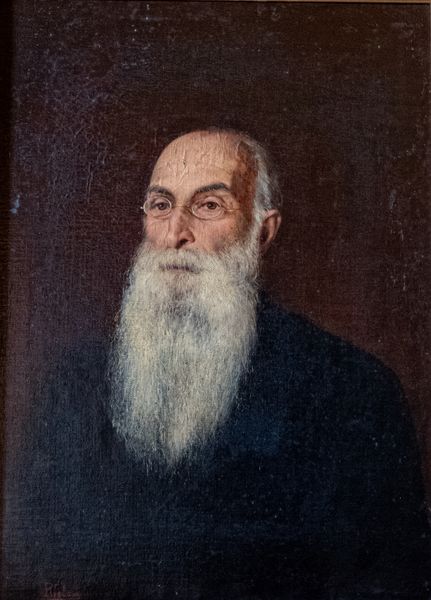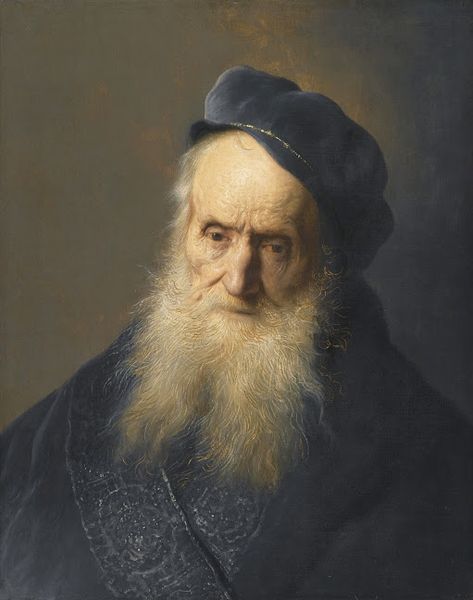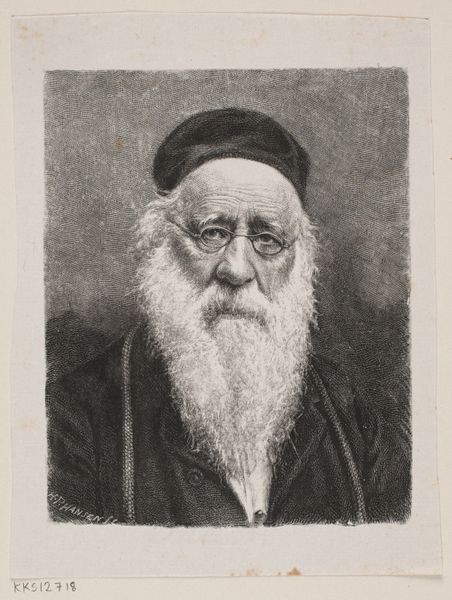
Copyright: Public domain
Curator: This is Francesco Hayez's "Self-portrait" painted in 1881. Editor: There's a real weightiness to this. It's not just the darkness of the background and the clothing, but in his gaze. He seems to be carrying the world on his shoulders. Curator: Interesting. When I look at it, I sense a man facing his own mortality, head-on. The way he renders the beard, the slight blurring around the edges – it feels less like a celebration of the self and more like an acceptance. Editor: Yes, the beard – and the way it contrasts with the cap. It points to specific material conditions and clothing of the time and what a self-portrait represents. How labor and class come into play. Curator: Exactly! But look at the textures, the almost tangible brushstrokes forming the fabric. It makes you want to reach out and touch it, to connect with the human effort behind its making. It seems to blend both Romanticism and realism as well. Editor: And there's something defiant in the very act of self-representation at his age. He isn’t presenting a smoothed-over idealized version, we are seeing something that's a material thing and at the same time we're staring straight into the effects and consequences of time and toil. Curator: It truly prompts a conversation. His work captures so many dimensions within such simplicity and with a very limited set of materials! Editor: Right. So even something that might appear like an act of introspective solitude as we see the portrait's final appearance actually reveals layers upon layers about how labor, representation, and material reality shape who we are. Curator: That's where Hayez truly excels - reminding us of the profound human connections underlying the creative act. Editor: Precisely, it reveals how material production becomes a part of us, shaping not just artworks but identities and lives as well.
Comments
No comments
Be the first to comment and join the conversation on the ultimate creative platform.
